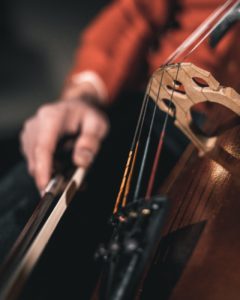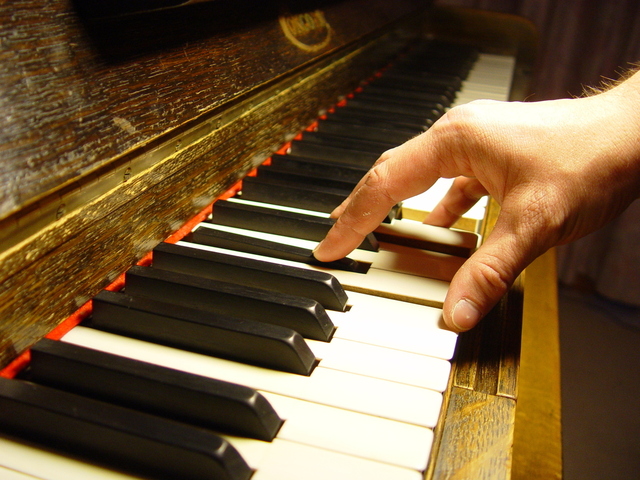One of the aims of the Alexander Technique is to improve coordination.
And I would say more specifically for musicians, the aim of the Technique is to improve the quality of overall coordination that you use to implement your music making skills.
A misapprehension that many musicians have is that skill and coordination are one and the same thing.
Though they are certainly closely related, they’re not exactly one and the same.
How so?
Allow me to clarify by offering my working definitions of the two terms.
Your skill is your ability to carry out your desired task (for our purposes, playing music). It is manifested in tangible, sonic results: pitch, time, articulation, tone color, technical control, expression, etc.
Your coordination is what you do with your entire self to carry out your skill. It is manifested in muscular effort, or more specifically, the quality of movement you apply to the task. (This includes balance, posture, breathing….everything you do!)
So it is possible to be a highly skilled musician (and yes, this does mean having highly cultivated fine motor coordination skills), yet have less than optimal overall, gross motor coordination.
You can witness this in many instances, if you take time to notice.
Some musicians make it look easy, don’t they?
Truth be told, for most of these musicians, it is easy. They typically appear effortless because their efforts are so singularly integrated into the skill of their performance. Virtually nothing they do interferes with their artistic intentions, with their desire of self-expression, nor with the acoustic and physiologic components involved in playing.
(I look upon classical pianist Artur Rubinstein as a glowing example: free neck, strong and flexible back and arms, moving easily, fluidly and naturally with the music. It is this beautiful, efficient coordination that is at the service of his skills.)
And I think we’ve all seen/heard virtuosic musicians who look like they’re fighting an imaginary foe as they play music: head compressed into the neck, raised (stiff) shoulders, rigid ribs and back, hard narrowed gaze, noisy breathing.
Yet they still deliver the goods. They still play devastatingly beautiful music. (No, I won’t point my finger at any one musician here, as a gesture of respect. But I so easily could!)
So should these musicians even bother with improving their overall coordination? Should you?
Yes. And for three main reasons:
1. Your overall coordination impacts your skill. When you are working in a less than optimally coordinated way, you are interfering with your brain/body’s ability to carry out your skill in the most efficient manner. In essence, you’re working against your human design, and not in accordance with it. You might be able to do so. But you do so despite of, not because of, your coordination. Improving your overall coordination invites greater skill. Or, as F.M. Alexander (the founder of the Alexander Technque) said, your improved coordination creates “the ideal conditions” for your skill to manifest itself through your bodily mechanism.
2. By improving your overall coordination, you reduce your risk of injury (and fatigue). This is why many musicians seek my help as an Alexander teacher in the first place. I have volumes of stories of very highly skilled musicians I’ve encountered who have career-threatening health issues that are related to the poor coordination they apply to their skill. As their coordination improves, so does their health, comfort, endurance and satisfaction.
3. By improving your overall coordination, you open yourself up to other expressive possibilities. This is the hidden gem of all this. As you improve your overall coordination, you also discover different ways to experience the music you play. You become less stereotyped (less “stuck”) in your interpretive choices, which, believe it or not, are highly conditioned by your bodily reactions. (This is especially true for improvising musicians!)
Our tendency as musicians is to sometimes become overly concerned with the parts that seem most pertinent to playing our instruments at the expense of neglecting the rest of ourselves. (For example, a flutist thinking perhaps too much about the formation of the embouchure at the expense of not noticing neck and shoulder strain.)
If this sounds even remotely familiar to you, consider including the quality of how you “use” your entire self (your overall coordination) into the consciousness of playing your instrument.
Let your head be poised freely atop your spine (and of course, let your jaw be free). Let your shoulders release and widen. Soften your gaze. Let you knees unlock. If you’re standing, let your ankles be free and mobile (feet, too!) as you permit the ground to support you. Let your breathing be elastic, easy, reflexive and expansive.
Think balance, mobility and expansion, instead of position or posture. A nice, lively, upward organization of your whole organism is the wish. Notice how these things impact your skill.
And of course, if you need any help in this area, consider finding a skilled Alexander Technique teacher. Allow your coordination to support your skill, and your expression.



